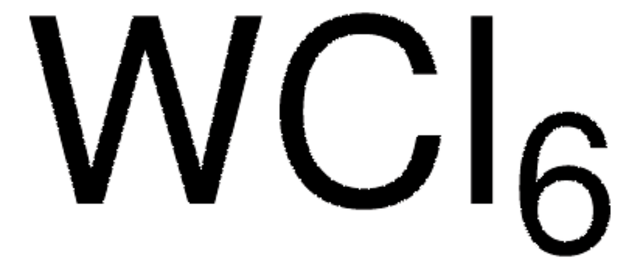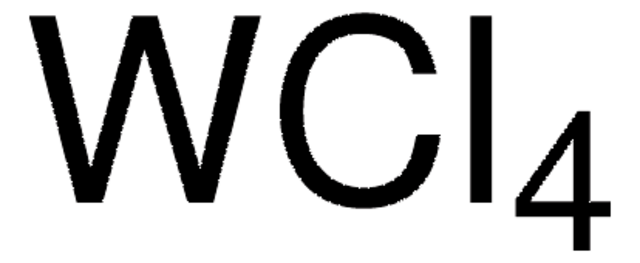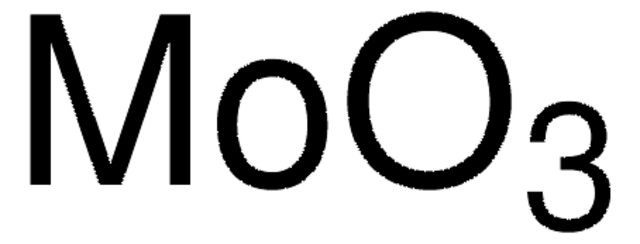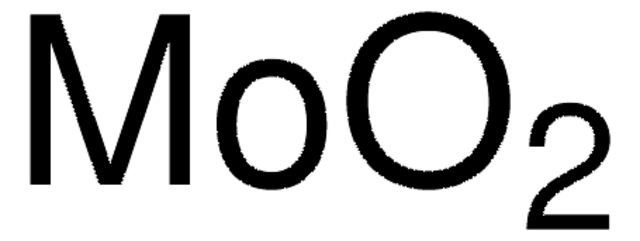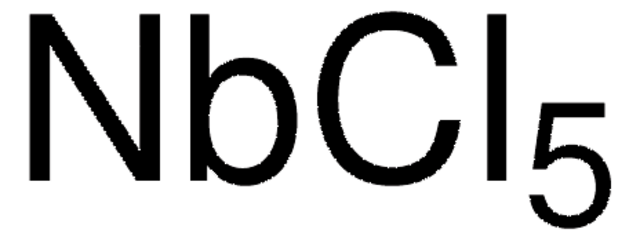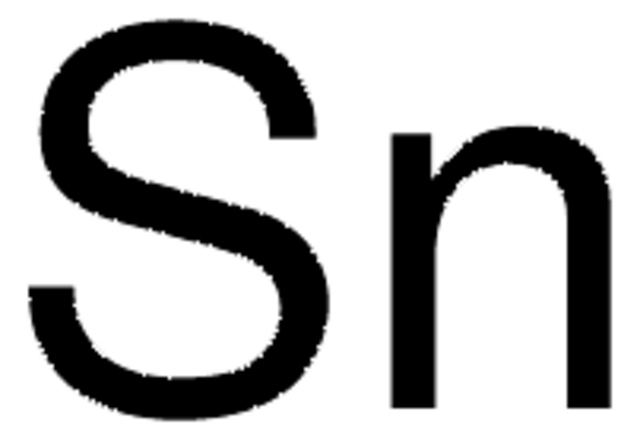642452
Molybdenum(V) chloride
anhydrous, powder, 99.99% trace metals basis (excluding W)
동의어(들):
Molybdenum pentachloride, Molybdenum(5+) chloride
About This Item
추천 제품
Grade
anhydrous
Quality Level
vapor pressure
1.75 mmHg ( 25 °C)
131 mmHg ( 250 °C)
분석
99.99% trace metals basis (excluding W)
양식
powder
불순물
≤150.0 ppm Trace Metal Analysis
bp
268 °C (lit.)
mp
194 °C (lit.)
density
2.928 g/mL at 25 °C (lit.)
응용 분야
battery manufacturing
SMILES string
Cl[Mo](Cl)(Cl)(Cl)Cl
InChI
1S/5ClH.Mo/h5*1H;/q;;;;;+5/p-5
InChI key
GICWIDZXWJGTCI-UHFFFAOYSA-I
유사한 제품을 찾으십니까? 방문 제품 비교 안내
일반 설명
애플리케이션
- As a catalyst for amidation of secondary benzyl alcohols.
- As a precursor to fabricate MoS2 thin films by atomic layer deposition method.
- As a primary catalyst for coordination polymerization of butadiene.
- To fabricate superior anode materials for Na-ion and Li-ion batteries.
- As a dual-function redox mediator for Li–O2 batteries to overcome thehigh polarization and low energy density issues.
신호어
Danger
유해 및 위험 성명서
예방조치 성명서
Hazard Classifications
Skin Corr. 1B
Storage Class Code
8A - Combustible corrosive hazardous materials
WGK
WGK 3
Flash Point (°F)
Not applicable
Flash Point (°C)
Not applicable
개인 보호 장비
Eyeshields, Faceshields, Gloves, type P3 (EN 143) respirator cartridges
이미 열람한 고객
문서
Nanostructured Materials Through Ultrasonic Spray Pyrolysis
Nanostructured Materials Through Ultrasonic Spray Pyrolysis
We presents an article about a micro review of reversible addition/fragmentation chain transfer (RAFT) polymerization. RAFT (Reversible Addition/Fragmentation Chain Transfer) polymerization is a reversible deactivation radical polymerization (RDRP) and one of the more versatile methods for providing living characteristics to radical polymerization.
Tools for Performing ATRP
프로토콜
We presents an article featuring procedures that describe polymerization of methyl methacrylate and vinyl acetate homopolymers and a block copolymer as performed by researchers at CSIRO.
Sigma-Aldrich presents an article about RAFT, or Reversible Addition/Fragmentation Chain Transfer, which is a form of living radical polymerization.
Sigma-Aldrich presents an article about the typical procedures for polymerizing via ATRP, which demonstrates that in the following two procedures describe two ATRP polymerization reactions as performed by Prof. Dave Hadddleton′s research group at the University of Warwick.
관련 콘텐츠
We offer a complete line of the highest purity inorganic salts and materials for the micro and nanoelectronics market.
자사의 과학자팀은 생명 과학, 재료 과학, 화학 합성, 크로마토그래피, 분석 및 기타 많은 영역을 포함한 모든 과학 분야에 경험이 있습니다..
고객지원팀으로 연락바랍니다.

